[ad_1]
Frans Malan and Niel Joubert tasting wine on the journey to Europe, the place they obtained the concept to start out a wine route in Stellenbosch. (Picture: Provided)
Since its first step half a century in the past, the footprint of wine tourism has prolonged to wine-producing areas in 5 provinces with 23 recorded wine routes.
The author helps Feeding in Motion, which helps folks within the broader Stellenbosch municipal space. Please help them here.
We take a lot without any consideration lately – rotisserie chickens within the grocery store, avos and strawberries all 12 months spherical (even when it goes in opposition to nature however we pay for the privilege anyway), not operating out of bathroom paper, street indicators directing us to wine farms…
None of this was at all times the case; when Stellenbosch Wine Routes was established in 1971, these acquainted brown and white indicators with the farms’ names pointing us to the entrances – and upon which we partly rely, together with GPS apps (and given my current feuds with Google Maps, the bodily indicators are important), to search out our vacation spot – had been prohibited. Apparently, the municipality thought they’d distract drivers and have an effect on their capacity to maintain management of their automobiles. Which is laughable now, contemplating cellphones. And the proportionate variety of idiots on the street 50 years later.
The higher possibility, it was determined, was to assign a quantity to every farm which then cross-referenced to a map, as a result of consulting a chunk of paper whereas driving – or arguing with whomever was within the passenger seat and flinging accusations about “somebody” not desirous to cease to ask for instructions – was simply a lot safer.
“My mother made the drawings of the primary map however they weren’t allowed to place any indicators on the roads,” recalled Nora Thiel, daughter of Stellenbosch Wine Routes co-founder Spatz Sperling, of Delheim. “Then they had been allowed numbers on a pole. We had been quantity three, Simonsig was quantity 5.
“Quantity three didn’t imply something, so my brother Victor and I needed to stand out on the freeway with a Delheim signal,” laughed Thiel. “We needed to run away from the police.”
Throughout a visit to Burgundy in 1969, Frans Malan (Simonsig) and Niel Joubert (Spier) found the well-known Routes des Vins in Morey St Denis and thought it to be an excellent thought, and might be carried out again dwelling in Stellenbosch. Malan had seen one thing related in Bordeaux as properly. Once they returned, they roped in Sperling to place this plan into motion. Again then, the trade was managed by the government-funded KWV and co-operatives resulting from oversupply, winery homeowners couldn’t promote wine underneath their very own labels, and pricing was mounted. Joubert was a director at KWV and a member of the Liquor Board, which proved invaluable, stated Malan in a 1992 interview in Wynboer journal.
“My dad needed to go round making an attempt to persuade folks to affix. We used to joke that my dad did all of the work and Frans and Niel had been the brains,” stated Thiel. “He wrote a few letters however obtained no reply. When he informed the others, Frans stated ‘no man, you’ll be able to’t simply write letters, it’s a must to go see them!’, so he drove from farm to farm.”
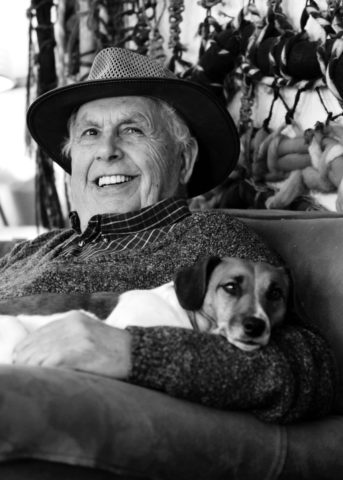
They took some convincing however as soon as they noticed the worth of opening their farms to the general public, they started to indicate curiosity, stated Malan within the Wynboer interview.
“It was our intention, and we believed it might be in our personal curiosity, to advertise South African wines and particularly, Stellenbosch wines. We inspired producers to bottle wines underneath their very own private labels and we burdened the truth that by opening their farms to the general public, the wine tradition might be expanded as folks would be taught extra about wines.”
Thiel spoke of how “extremely good” the route was – and is – for South African wine training, to deliver folks to the farms and make them really feel a part of it. “Immediately nonetheless, the most important position we play is academic. And to make it an expertise guests really feel snug with.”
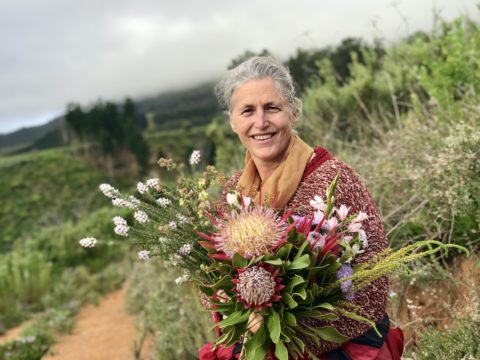
One must also be aware that because the native wine trade was managed on the time, it was additionally boycotted by the world at massive resulting from apartheid. South African wines weren’t welcome on worldwide tables till the early Nineties. So let’s take a second right here to pause and replicate on how a lot issues have modified for the higher.
Starting with 5 farms which had been bottling their very own wines in 1971, the quantity rapidly grew to 11, and by 1973, 19 farms had been members of SWR. In 2021 there are greater than 120 wine and grape producer members within the Stellenbosch Wine of Origin area, making this the most important wine route in South Africa, nearly as massive as all of the others mixed. In truth, there are 5 sub-routes, providing a variety of experiences and actions. It’s not simply wine tasting any extra, Dorothy. That is wine tourism at its greatest; an trade that contributes R7.2-billion to the GDP per 12 months, with lodging, occasions, sports activities, eating places (greater than half of member wineries have integrated food-related experiences) and weddings.
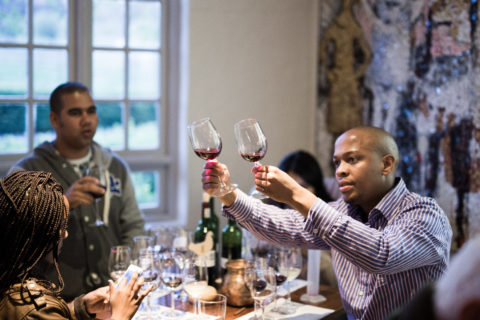
It wasn’t straightforward in these early days. Thiel remembers as much as 600 guests a day within the Nineteen Eighties, who would use the toilet of their personal dwelling. The tasting room was one desk and some glasses, and wine gross sales had been restricted to three,000 circumstances a 12 months – from all of the farms mixed – and a minimal of 12 bottles might be bought at a time.
“We weren’t allowed to promote single bottles. Initially we couldn’t open on a Sunday, then we had been allowed from 11am until 2pm. Wine needed to have a cork not a screw cap.
“We weren’t allowed to cost for tastings, so we bought glasses. We weren’t allowed to have a restaurant, the kitchen needed to be tiled prime to backside, the eating space needed to be carpeted, there needed to be two entrances for whites and non-whites … we didn’t have any of that,” stated Thiel.
“In 1976, my mother realised guests can be hungry so we should always give them some meals. We didn’t have a restaurant licence so we obtained a hawker’s licence, which allowed meals to be made elsewhere and bought on. Ute (winemaker Otto Hellmer’s spouse) made bread and snoek pâté, obtained just a few cheeses, which she dropped at the outdated manor home, put them on a plate and served platters from the homestead.
“We even had three sittings a day, for which to procure tickets. My mother says Hartenberg was the subsequent farm to serve meals. We did cellar excursions and we did winery excursions, breakfast, lunches, present retailers – leisure throughout to attempt to hold folks busy.”
The SWR founding members are all dearly departed now. On 17 April, 2021 – the official fiftieth anniversary of SWR – Isabeau Botha shared her reminiscences of her Oupa Niel Joubert on social media:
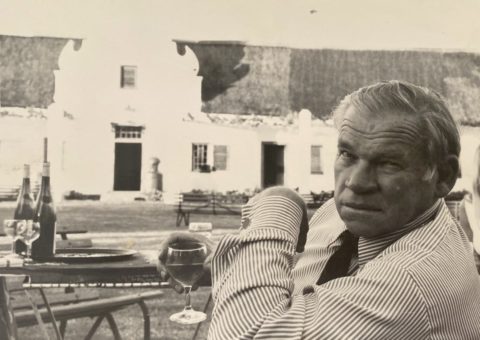
“Nearly 40 years in the past, just a few days earlier than I turned seven years outdated, my grandfather celebrated his seventieth birthday. On the excessive level of his (as at all times) epic celebration, candles had been lit, everybody sang ‘Veels geluk Oom Niel’, and he promptly declared to the friends that they need to take pleasure in solely the quantity zero of Ouma Bonté’s big number-cake, and gifted me the quantity seven of the cake – true to his nice ardour for ‘samesyn’ (togetherness; as in celebrating)! This bigger-than-life gesture even trumped our favorite, Ouma’s well-known Casimir-figure desserts specifically made for grandkids’ birthdays.
“That is how and why I keep in mind my Oupa Niel Joubert, who’s honoured as one of many founding fathers of the Stellenbosch Wine Routes, heralding the start of wine tourism in South Africa. I salute them for his or her visionary creation!
“My Oupa was not solely a ‘baanbreker’ (pioneer) and a visionary thinker, but additionally a jolly and good fellow.
“Life was at all times thrilling when my Oupa was round. My father Chris remembers that as a director of the KWV, Oupa Niel was adamant concerning the annual tackle of representations to extend the value of wine with a penny … sure, that’s one penny (for curiosity’s sake, within the early days of the wine route, a case of 12 bottles of Pinotage would put you again R6.50 and a case of Riesling solely R4.50). My aunt Helena remembers Oupa Niel piloting a meals and wine pageant within the Stellenbosch city corridor, resulting in the start of the Stellenbosch Fynproewersgilde and the ever-famous Stellenbosch Meals and Wine Competition.
“To me, considered one of his 12 grandchildren, he was simply one of the best Oupa on the earth. He at all times made time for us. Even when this meant deep-sea fishing at 4am. He additionally taught us to dream, suppose and do. I knew him for 16 stunning years. Sure, he usually did issues a bit out of the very sq. Afrikaner field. Oupa Niel was not solely a legendary ‘groot gees’, he actually personified the phrase ‘gees’ (a hearty spirit) – he was sort, jovial, exuberant, and captivated with life, good meals, nice wine, and even higher firm. He was daring in inspiring others to check out new ventures at a time when promoting wine underneath your individual label was a international idea.
“‘The wine route opened up the farm to Jan Publiek,’ my father Chris says. ‘You didn’t go to a sheep farm or a grain farm, however you probably did go to a wine farm to style wine … which created a possibility for a restaurant on the werf … after which for a harvest pageant, an artwork gallery, a market and extra. The farm expertise nonetheless holds great future potential for agritourism’.”
Frans Malan was not solely a co-founder of SWR however was additionally the primary South African winemaker to provide a bottle-fermented glowing wine; Kaapse Vonkel celebrates its fiftieth classic this 12 months too, an equally important milestone. His son Johan and grandson Michael have continued the household custom. Present senior winemaker Charl Schoeman – whites and Cap Classiques – informed us that Michael made the reds, and whereas Johan has moved extra right into a advertising position, he’s nonetheless lively within the cellar.
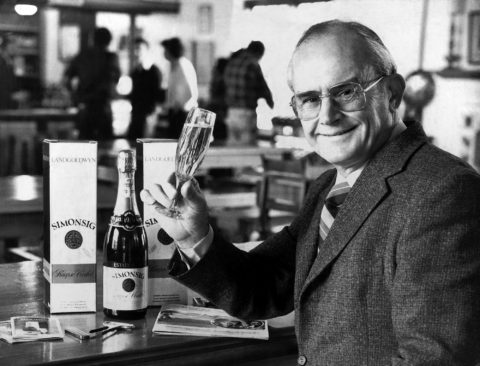
“The trade was fairly regulated with a lot of the wine made by KWV and Stellenbosch Farmers’ Vineyard. Frans put in chrome steel tanks in an effort to up the standard of the wines, however costs had been at all times the identical,” he stated.
The primary wine bottled underneath the Simonsig label was Chenin Blanc in 1968, adopted by Pinotage in 1970. Kaapse Vonkel was made in 1971 and launched in 1973. “Frans visited and liked the Champagne area in France and after he visited, he was impressed with a imaginative and prescient to make a methode champenoise,” stated Schoeman. “He had no entry to Chardonnay and Pinot Noir grapes, that are the predominant varietals, so he used Chenin Blanc.”

When it was launched, Kaapse Vonkel was the costliest South African wine available on the market at – anticipate it– R3 a bottle. The market was stuffed with carbonated glowing wines, largely candy, so Malan needed to in some way convey the message to shoppers why they need to pay extra for this bone-dry wine. With every bottle, he despatched out a pamphlet with illustrations and images displaying the strategy, and the label stated it was fermented IN THIS BOTTLE, like that, in capital letters.
“About 10 years later a few of the different wineries began making Cap Classiques and there at the moment are round 200 producers making greater than eight million bottles yearly,” stated Schoeman. “It is likely one of the most fun and vibrant wine classes in SA in the intervening time. It’s costly to make, so it must be premium high quality. The trade customary is of such top quality you hardly ever purchase a Cap Classique, which is disappointing.”
Typically the good thing about doing one thing first is that it may by no means be taken away, stated SWR chairman Mike Ratcliffe pragmatically. “It’s at all times a helpful factor, and you need to use it time and again.” As custodians of the legacy created in 1971, SWR is dedicated to defending its model and future.
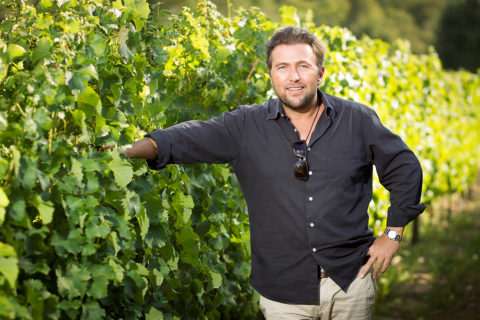
“Stellenbosch is a various area, an enormous area, and it’s not an opinion however it’s a indisputable fact that within the sense of a wine perspective, Stellenbosch guidelines the roost.
“When you enter any sort of competitors, we’ll steamroll the outcomes and it’s not at all times due to the standard – though I wish to suppose it’s – but additionally due to sheer quantity.
“With that dimension comes duty, and we take that fairly significantly, consciously selling the trade and rising the product. We’ve an enormous focus of well-established position gamers; heritage manufacturers like Vergenoegd to Meerlust, to Kanonkop and Verlgelegen. Nobody else has that.
“We even have this actually growing younger gun tradition, garagiste and small hippy winemakers making barrels right here and barrels there. A brand new phenomenon which we’re grappling with, I received’t lie, are these drawn to the Stellenbosch model from exterior, similar to Elgin and Franschhoek, that are launching Cabernet Sauvignon made with grapes from Stellenbosch, and utilizing the title.
“A Robertson model is taking a look at organising a tasting room in downtown Stellenbosch and whereas we are able to’t cease them, we’ve to ask questions on what they’re doing. We even have Brampton; we engaged with them various years in the past and stated ‘guys, you’re sort of buying and selling on our laurels’. They took our feedback to coronary heart and at the moment are rolling out two or three Stellenbosch wines.”
The Stellenbosch Wine Routes has two mandates: generic wine promotion and wine-tourism promotion. Generic wine promotion is constructing model Stellenbosch to be related to high quality and, over time, elevating the value of the grapes, defined Ratcliffe.
“The wine tourism aspect is to verify vacationers who come to city are structured and organised and know the place to go. In the event that they love crimson wine, there’s a route; a white route, a glowing route; and to attach with lodging and eating places,” he stated.
“It’s wonderful how little vacationers know, and the way little they care. They wish to come to Stellenbosch as a result of it’s the place to be. As soon as they’re right here they may do no matter they’re informed, within the nicest manner. Individuals wish to be guided.”
The celebrations in Stellenbosch are deliberate to final a full 12 months, till April 16, 2022, culminating in a post-harvest extravaganza of a celebration. On the finish of August 2021, a 10-day pageant is deliberate, referred to as Wine City Stellenbosch, which shall be scaled in keeping with the second (and by that we imply Covid). There’ll be a marathon, a four-day golf event, eating places are already speaking a few “Restaurant Week”, a lot of wonderful offers on lodging, an enormous bottle pageant, a high quality wine pageant, and it will likely be the launchpad for a global braai broodjie competitors.
“It’s tongue in cheek however the final purpose – we’re rolling with it – is that we wish the Olympic committee to contemplate braaibroodjie for inclusion,” stated Ratcliffe with a cheeky grin. “It’s completely ridiculous however we wish to make it a spectator sport. We’ll shut off Church Avenue, with braais down the center, and grandstands.”
If something can get folks to take sides, it’s a braaibroodjie. Ratcliffe envisages traditional and gourmand classes, with entries being paired with Stellenbosch wines for judging. He sees tv protection, massive screens, roaming cameras and Mexican waves.
“We’re holding a one-day workshop in Kayamandi in July, and the winner will get a free entry into the competitors. We’ll have a Joburg invitational, a Durban invitational, and if we are able to pull it off relying on Covid, fly in a Michelin star chef as a result of it’s appropriately foolish,” he stated.
I’m in. Who’s with me? DM/TGIFood
For extra data, e mail [email protected] or name 021 886 4310. Study extra about Stellenbosch’s status for high quality wines, meals, historical past and tradition at www.wineroute.co.za and www.visitstellenbosch.org.
Use @stellwineroute to attach with Stellenbosch Wine Routes on Fb, Twitter and Instagram.
Fascinating anecdotes
The Stellenbosch Wine Routes nonetheless has its authentic telephone quantity. Within the Nineteen Eighties, the quantity was 4310 at its first workplace at 33 Plein Avenue. Immediately, it’s 021 886 4310.
The primary wine pageant in South Africa was hosted within the Stellenbosch City Corridor in 1973 in collaboration with the Stellenbosch Fynproewersgilde.
Founding members of the wine route had been instrumental within the institution of the Wine of Origin system.
Frans Malan and his fellow founders of the Stellenbosch Wine Routes challenged the street authorities and within the late Seventies, the primary street signage for wine farms was authorised.
![]()
[ad_2]
Source link







